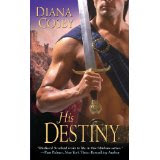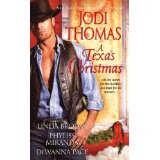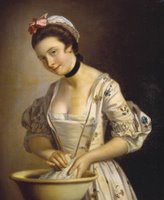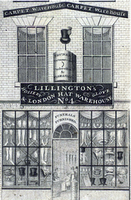Today (or tomorrow) I’m the Take Ten With guest at Cover Cafe, talking about the bookcovers in my life.
Interestingly enough, Scottish Historicals did feature the hero. And Westerns.



Today (or tomorrow) I’m the Take Ten With guest at Cover Cafe, talking about the bookcovers in my life.
Interestingly enough, Scottish Historicals did feature the hero. And Westerns.



 When my daughters were young, I read to them all the time. This summer, I had the joy of doing it again.
When my daughters were young, I read to them all the time. This summer, I had the joy of doing it again.
We’ve always had a rule of reading the book before watching the movie. I wanted us all to be able to watch THE LORD OF THE RINGS together, so I was urging my younger daughter to start reading THE HOBBIT. Although an avid reader, she resisted, saying she didn’t like reading books with long paragraphs. And so I decided to read THE HOBBIT aloud to her, and discovered that she was right. Tolkien did tend to use longer paragraphs than is common in more recent fiction and it can look a bit daunting on the page.
The previous summer, I read PRIDE AND PREJUDICE to my older daughter, again in preparation for watching the films. Much as I love Jane Austen, I know her style is difficult for young teens, with sentences that can run paragraphs long and paragraphs that can take over a whole page. And confusing period details. (“No, undressed ball does not mean they go naked.”) So when I suggested she try NORTHANGER ABBEY this summer, she still wanted me to read along with her. How could I refuse?
The whole reading-together project was a huge success. My younger daughter is now reading THE FELLOWSHIP OF THE RING on her own, and the older one is moving on to EMMA. So I’ve got them firmly hooked on some classics! I feel vindicated as a mother.
As an author, though, I’m aware that modern readers can have difficulty with older styles of writing. I would never write a sentence as long as this one:
Mrs Morland was a very good woman, and wished to see her children everything they ought to be; but her time was so much occupied in lying-in and teaching the little ones, that her elder daughters were inevitably left to shift for themselves; and it was not very wonderful that Catherine, who had by nature nothing heroic about her, should prefer cricket, baseball, riding on horseback, and running about the country at the age of fourteen, to books—or at least books of information—for provided that nothing like useful knowledge could be gained from them, provided they were all story and no reflection, she had never any objection to books at all.
There are also some grammatical constructions that trip up the reader, such as “Are not you wild to know?” Did your mind automatically change it to “Are you not wild to know?” That’s what happened to me as I was reading aloud, and it made me stumble.
I want to have a period feel to my books, but I do avoid anything like that that could trip up a reader. I also tend to use pretty short paragraphs, because I think having some white space is easier on the eyes.
But what a shame it would be if no one bothered to get past some of the challenges in the classics, if the stories lived on only in their films (fantastic as many of them are).
But before we chat, here are the winners of this week’s drawing for the Kindle edition of LADY EM’S INDISCRETION.
Willaful
Margay
Cathy P
Girlygirlhoosier52
Tracey
Congratulations! Please send your email and the email of a friend who you think might enjoy the Kindle ebook to elena @ elenagreene dot com.
 Hello Friday, goodbye September!
Hello Friday, goodbye September!
Sorry about this. I thought I’d take a look and see what was up at the Riskies, lateish in the afternoon, and realized it was Thursday, my day to blog. It doesn’t feel like a Thursday, you see. I’m at work…
So here’s a recycled post from a couple years ago which raised some interesting discussions then and might yet do so again. And next week, absolutely new content, I promise–an interview with a vampire.
I spoke at a workshop a few weeks ago with some other historical writers, and when we asked for questions, a woman asked this:
So…you’re living in England during the Regency. You’re not Lady Something or the Hon. Miss Something-Else. You’re not even a gentleman’s daughter. You have to earn a living.
 If you were born in the country, you might be able to stay there–always assuming you weren’t forced out by foreclosure–or you might seek a job in a mill or factory in one of the rapidly growing industrial cities.
If you were born in the country, you might be able to stay there–always assuming you weren’t forced out by foreclosure–or you might seek a job in a mill or factory in one of the rapidly growing industrial cities.

 Or, you might go into service. Here’s another amazing statistic: in the eighteenth century, one-third of all the population (with the exception of the aristocracy) was in service at some time in their lives—usually until their mid-twenties. About one-third of London’s population was servants. Some people, working in the houses of the rich, rose in the ranks to enter the servant elite as butler, housekeeper, or lady’s maid; even though this illustration is from the mid-eighteenth century, you can see how well-dressed this lady’s maid is. Servants earned room and board, plus “perks”—for a ladies maid or valet, cast-off clothing they could wear or sell—or “vails,” tips from visitors usually given to footmen.
Or, you might go into service. Here’s another amazing statistic: in the eighteenth century, one-third of all the population (with the exception of the aristocracy) was in service at some time in their lives—usually until their mid-twenties. About one-third of London’s population was servants. Some people, working in the houses of the rich, rose in the ranks to enter the servant elite as butler, housekeeper, or lady’s maid; even though this illustration is from the mid-eighteenth century, you can see how well-dressed this lady’s maid is. Servants earned room and board, plus “perks”—for a ladies maid or valet, cast-off clothing they could wear or sell—or “vails,” tips from visitors usually given to footmen.  The maidservant illustration is from the mid-nineteenth century, but gives you an idea of what it was like being at the beck and call of a bell, and negotiating stairs in a long skirt, possibly carrying something worse than a tea service. Becoming a servant for a few years gave you upward mobility; hopefully you’d have saved enough to leave, marry, and own your own business—a shop, maybe—and have a servant or two of your own.
The maidservant illustration is from the mid-nineteenth century, but gives you an idea of what it was like being at the beck and call of a bell, and negotiating stairs in a long skirt, possibly carrying something worse than a tea service. Becoming a servant for a few years gave you upward mobility; hopefully you’d have saved enough to leave, marry, and own your own business—a shop, maybe—and have a servant or two of your own.
But life was uncertain and who knows where you might end up (another interesting statistic, although one I find difficult to believe: one third of the female population of London during the nineteenth century were prostitutes). You might find yourself reviewed in Harris’s List of Covent Garden Ladies, a sort of Michelin Guide to whores for the discerning gentleman.
Your best bet, really, as we told the woman smart enough to ask this interesting question, was to marry as well as you could.
So what what would you be?
If you want to be a contest winner, visit my website, sign up on my mailing list to enter my contest, and read various excerpts including one from JANE AUSTEN: BLOOD PERSUASION.
Happy Tuesday, everyone! I was out last night, hanging out in the bar of my favorite local restaurant (Ludivine, if you happen to be in the Oklahoma City area! Go there–it is fantastic…), and we started speculating on what the first cocktail might have been. So we had to get someone’s phone out and Google it. Here is what we found:
There were things like punches and syllabubs that had recipes from the Renaissance era, but the earliest known printed use of the word “cocktail” was on April 28, 1803 in The Farmer’s Cabinet: “Drank a glass of cocktail—excellent for the head…Call’d at the Doct’s. found Burnham—he looked very wise—drank another glass of cocktail.”
The earliest definition of a cocktail can be found in The Balance and Columbian Repository out of Hudson, NY: “Cocktail is a stimulating liquor composed of spirits of any kind, sugar, water, and bitters—it is vulgarly called a bittered sling and is supposed to be an excellent electioneering potion, inasmuch as it renders the heart stout and bold, at the same time that it fuddles the head. It is said, also to be of great use to a candidate: because a person, having swallowed a glass of it, is ready to swallow any thing else.”
The first bartender’s guide could be 1862’s How to Mix Drinks, or The Bon Vivant’s Companion by “Professor” Jerry Thomas.
One of my favorite drinks, especially now that the weather is turning cooler, is a chocolatini–this looks like a good recipe here…
What are your favorite cocktails???
